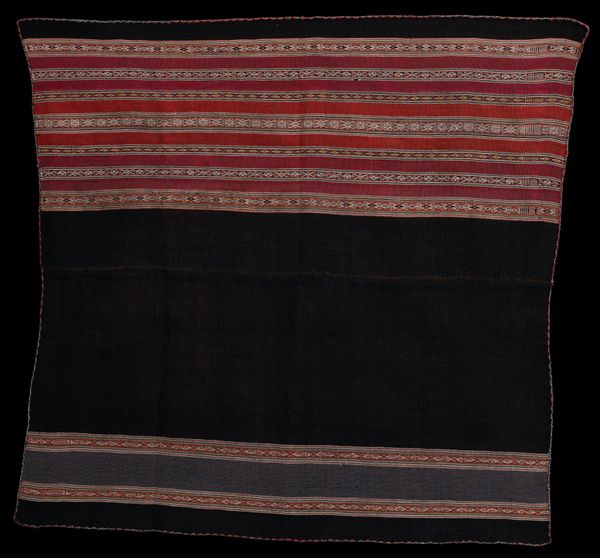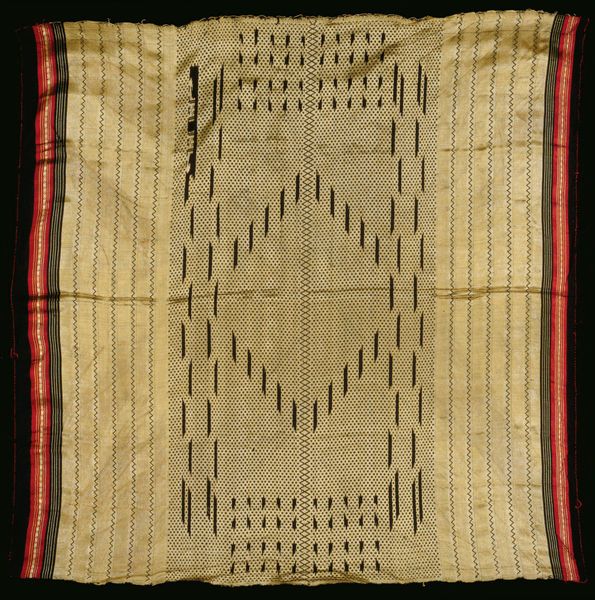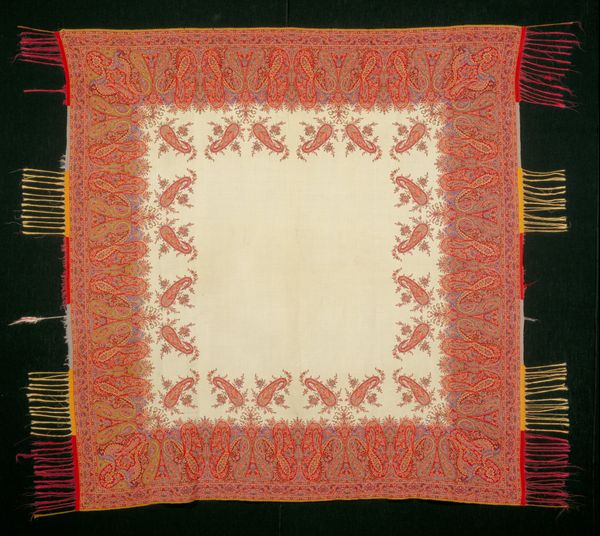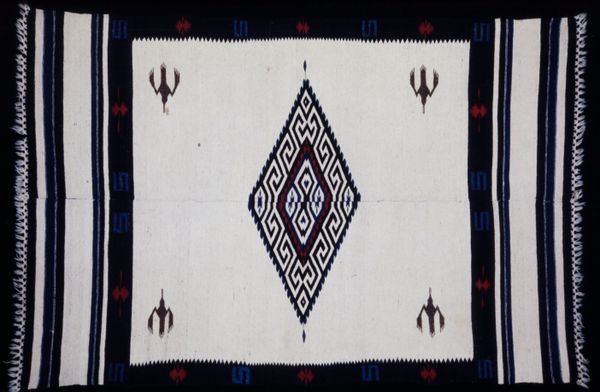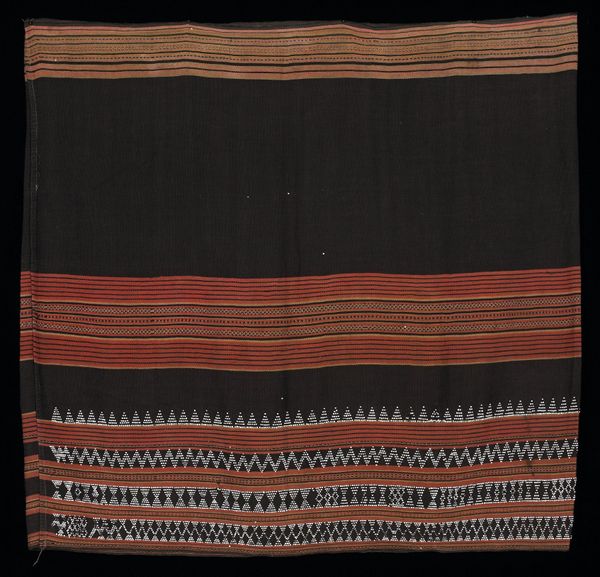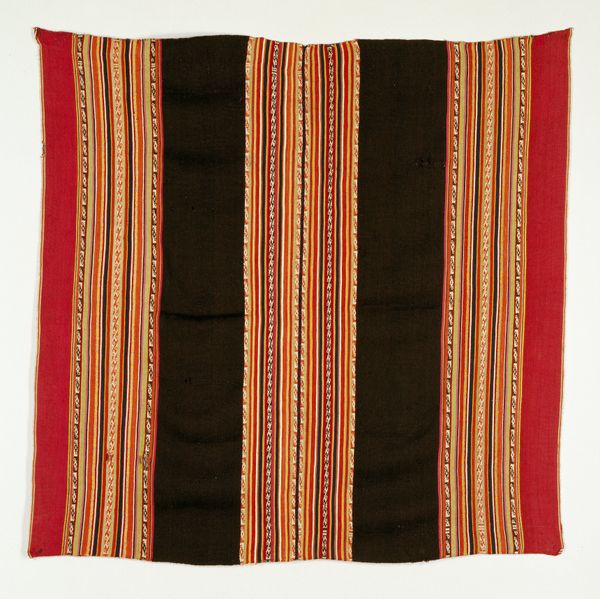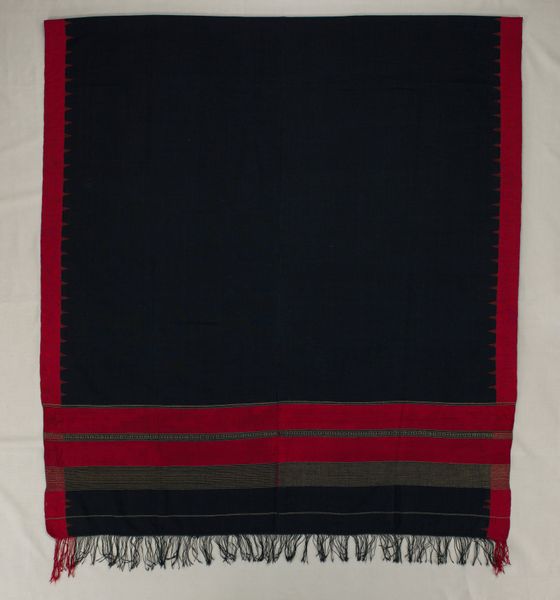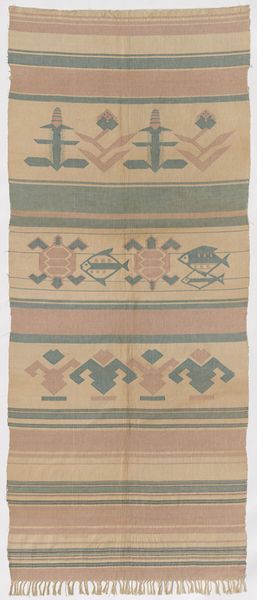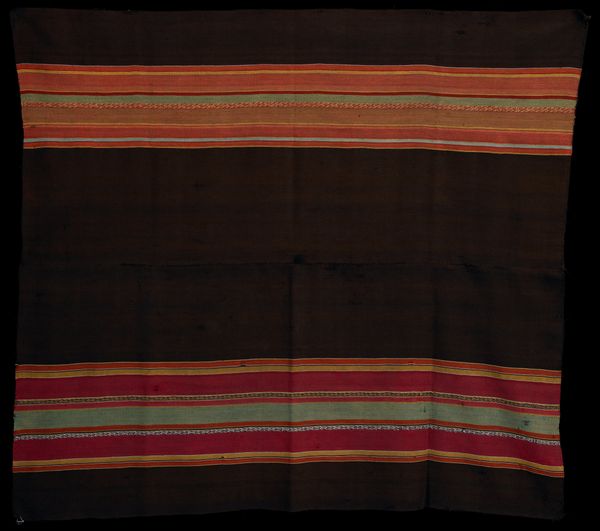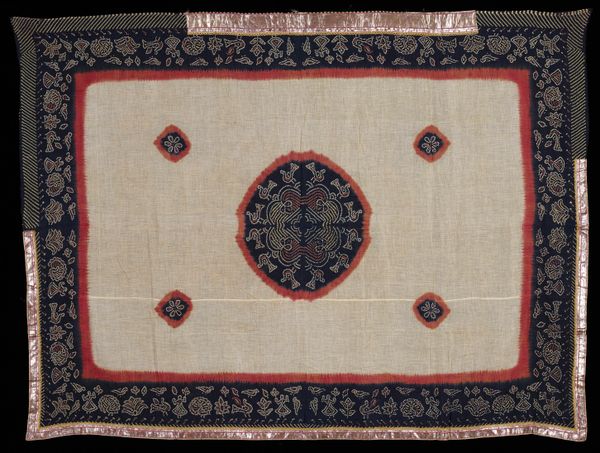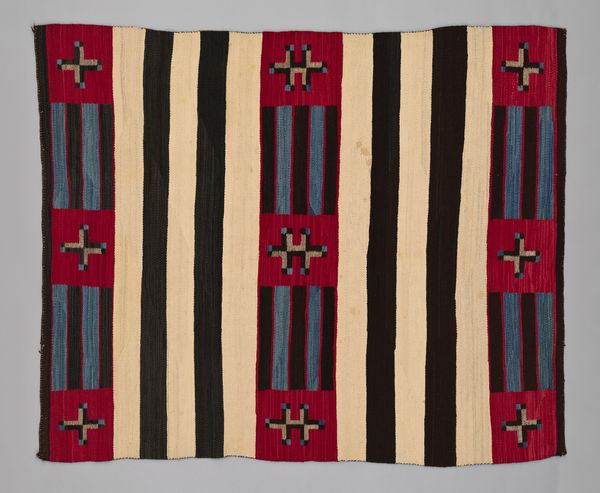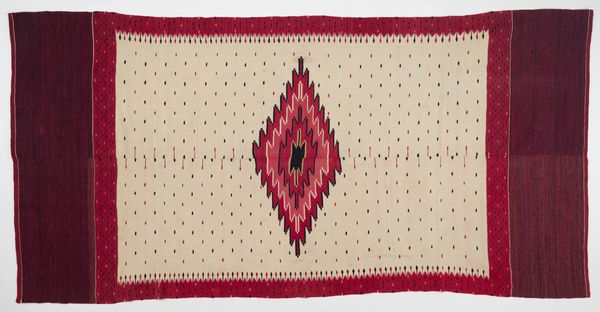
fibre-art, weaving, textile
#
fibre-art
#
pottery
#
weaving
#
decorative
#
textile
#
form
#
geometric
#
geometric-abstraction
#
line
#
decorative-art
#
layered pattern
#
decorative art
#
indigenous-americas
Dimensions: 43 x 63 1/4 in. (109.22 x 160.66 cm)
Copyright: Public Domain
Curator: Welcome. Here we have an early 20th-century cotton Manta crafted by a Hopi artist, a vibrant example of Indigenous American weaving now held at the Minneapolis Institute of Art. My first impression is the powerful horizontal architecture – that stark white field bookended by richly detailed bands. Editor: It strikes me as both bold and incredibly controlled. But looking at the piece, I am drawn to considering its place within Hopi society—the social narratives woven into it. Curator: The artist certainly displays a rigorous formal vocabulary. Consider the geometric patterns, the careful balancing of negative space, and the rhythmic repetition of shapes. Semiotically, these lines and forms constitute a specific, intentional visual language. Editor: And we should explore the possible significance of such visual language within its cultural context. A Manta, traditionally woven by Hopi women, is more than just decoration; it’s often part of important ceremonies and a customary bridal garment, symbolizing the bond between the bride, her family, and the community. Curator: The cotton fibres themselves offer an interesting tactile dimension; each thread is deliberately placed to create texture and imbue this cotton cloth with a sense of understated luxury. Editor: The use of particular colours, and geometric motifs likely have layered meaning. For example, these bands featuring a flower or butterfly may represent different clans or aspects of the natural world. And even the act of weaving can be understood as a process imbued with meaning for Hopi women, a means of maintaining tradition while creating functional art. Curator: Indeed. Focusing solely on the intrinsic elements of form and composition allows for a richer appreciation, as form always follows function and intention. Editor: Absolutely. Viewing art through the lens of culture, gender, and community really enriches our understanding and appreciation, as the cotton textile embodies cultural endurance, agency, and identity. Curator: It’s a fascinating blend of individual artistry and cultural expression. Editor: A textile rich with meaning, layered within geometric form.
Comments
minneapolisinstituteofart almost 2 years ago
⋮
It is common among the Pueblos that the men do the weaving. In historical times, this style of woman’s manta was worn daily, but this particular manta may have been used for ceremonial purposes because of its elaborate decoration. The lower embroidered section is divided into five sections, each embellished with a diamond-shaped motif. Within each diamond are designs that have been embroidered and reference the Hopi worldview of renewal and rejuvenation. The symbols are flowers, butterflies, and rain clouds. The painted designs on the skirt of the Butterfly Maiden Kachina in this gallery have almost identical imagery.
Join the conversation
Join millions of artists and users on Artera today and experience the ultimate creative platform.
